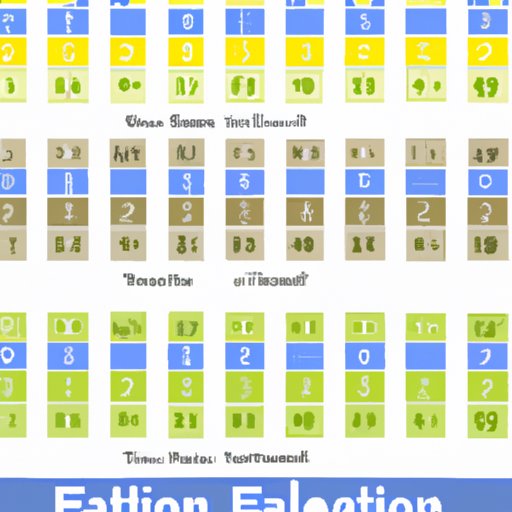Introduction
Learning how to multiply fractions with whole numbers is a fundamental skill in mathematics that is useful in everyday life. By combining fractions and whole numbers, we can accurately measure ingredients for cooking, calculate time and distance, and determine the area of a surface. In this article, we will break down the method for multiplying fractions with whole numbers into easy-to-follow steps alongside sample problems and tips to simplify your work!
Step-by-Step Process for Multiplying Fractions with Whole Numbers
If we want to multiply a fraction by a whole number, we must first convert the whole number into a fraction. This is a simple process: we substitute the whole number as the numerator and give it a denominator of 1. Once we have done this, we can proceed as usual by multiplying both the numerators and denominators of the fractions. Let’s see an example.
Suppose we want to multiply 2/3 by 4. To turn the whole number 4 into a fraction, we write 4/1. Now we have:
2/3 x 4/1 = (2 x 4) / (3 x 1) = 8/3
As we see, we can multiply the numerators and denominators, and then write the resulting fraction in lowest terms. In this case, the fraction is already simplified.
Examples of Multiplying Fractions with Whole Numbers
Let’s go over a few examples to help solidify the process of multiplying fractions with whole numbers.
Example 1: 1/4 x 3
To convert 3 into a fraction, we have 3/1. Now we have:
1/4 x 3/1 = (1 x 3) / (4 x 1) = 3/4
This product is already in its simplest form.
Example 2: 2/5 x 6
To convert 6 into a fraction, we have 6/1. Now we have:
2/5 x 6/1 = (2 x 6) / (5 x 1) = 12/5
This fraction cannot be simplified, so we leave it as is.
Example 3: 2 1/3 x 2/7
If we have mixed numbers, we first need to convert them into improper fractions. Here, 2 1/3 is equal to:
(2 x 3 + 1) / 3 = 7/3
Continuing with 2/7, we have:
7/3 x 2/7 = (7 x 2) / (3 x 7) = 14/21
We can simplify this fraction by finding that both 14 and 21 are divisible by 7, and then dividing numerator and denominator by 7. We get 2/3.
Tips and Tricks for Easily Multiplying Fractions with Whole Numbers
Want to make multiplying fractions with whole numbers even easier? Try some of these tips:
- Before you start, break down both fractions into smaller pieces that have common factors.
- Whenever possible, simplify fractions beforehand.
- If you’re dealing with mixed numbers, convert them to improper fractions before proceeding with multiplication.
- Use a calculator to double-check your work.
Common Mistakes to Avoid When Multiplying Fractions with Whole Numbers
Multiplying fractions with whole numbers is a part of elementary math that can cause confusion and mistakes. Here are three common errors to look out for when solving such problems:
- Forgetting to convert the whole number to a fraction before multiplying.
- Not reducing fractions to their simplest form.
- When working with mixed numbers, not converting them to improper fractions first.
How to Simplify Fractions After Multiplying with Whole Numbers
After multiplication, it is often possible to simplify the fraction you get by reducing it to its lowest terms. The process is relatively simple, just divide both numerator and denominator by their largest common factor. Let’s look at an example:
4/5 x 3/6 = (4 x 3) / (5 x 6) = 12/30
By dividing the numerator and denominator by 6, which is their greatest common factor, we get:
12/30 ÷ 6/6 =2/5
Real-World Applications of Multiplying Fractions with Whole Numbers
Multiplying fractions with whole numbers is not only a fundamental part of mathematics, but it is also useful in everyday life. Consider the following examples:
- In recipes, we might need to scale ingredients up or down with fractions to match the desired serving size.
- For woodworking or home improvement projects, we might need to measure and cut pieces to exact fractions of an inch.
- When dealing with money, we might need to calculate percentages or divide amounts fairly between people.
By mastering the process of multiplying fractions with whole numbers, you will be better prepared to deal with these and other real-world scenarios.
Conclusion
Multiplying fractions with whole numbers might seem daunting at first, but with some practice and guidance, it can become a breeze. By following these steps and guidelines for simplification, you can accurately calculate products of fractions and whole numbers.
